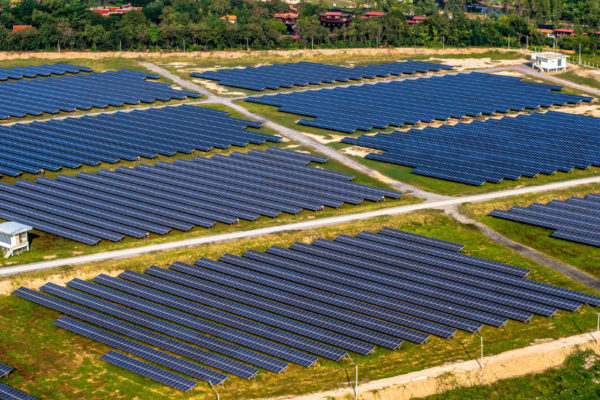Rooftop solar could be ticking up in value as Pacific Gas and Electric (PG&E) prepares for bankruptcy.
Indeed, the devastating wildfires in California might topple PG&E due to a wave of $30 billion in liabilities. The result could be one of the largest bankruptcies of a public utility in history.
But in the process of litigating liabilities, local utilities and ratepayers might discover that rooftop solar has additional value that has been previously underestimated.
One of the weak-links that increases wildfire liability is long distance electricity transmission. Any electricity generation system placed in remote locations, including natural gas, hydro, and nuclear power plants, could be subject to increased liability if transmission lines pass through heavily forested areas.
In fact, even utility-scale solar (i.e. large collections of solar panels) would be subject to the same concerns since fields of photovoltaic panels require an open plot of land, moving the system to remote locations. Underground transmission lines could help address the liability concern, but digging is expensive and might offset the benefits of reduced liability.
The fact that rooftop solar is located coincident with the consumption of electricity means that it does not require large, high voltage transmission lines that run through forests (or, at least, it could mean fewer lines). The reduction in transmission lines could reduce liability for companies that manage electricity generation and transmission. The lower liability could improve credit ratings and build additional public support, both of which could improve the economic viability of rooftop solar in comparison to conventional power generation solutions.
The liability that PG&E is facing arises from decades old power lines that are strung across central and northern California. A falling tree branch or high winds can down a power line, producing sparks and igniting a blaze that can destroy thousands of acres and endanger local communities. From June 2014 through 2017, PG&E has been found to be responsible for over 1500 wildfires, some small and others large – all told destroying 3,256 structures and killing 22 people in 2017.
PG&E has now announced that Chief Executive Geisha Williams has stepped down in light of the growing liabilities that could far outweigh the dwindling market value of the company. Ratings companies, S&P and Moody’s, have downgraded PG&E’s credit rating, pushing the company into junk status and exacerbating the already challenging financial condition. In support of the downgrade, Moody’s explicitly stated that the liability from the 2017 and 2018 wildfires in CA will be extensive and that bankruptcy might be the only viable option for resolution.
The looming collapse of PG&E could become painful for ratepayers throughout CA as regulators, politicians, and investors struggle to determine who should carry the financial burden of recovering from the fallout, and how to best move forward in a way that delivers reliable electricity to the millions of customers in central and northern California.
California is already full steam ahead in support of rooftop solar. In an effort to continue moving solar further and faster, California recently approved building standards that all new residential construction will be required to install rooftop solar. These moves by California could turn out to be fortuitous for reimagining how to rebuild the electricity sector in light of growing liabilities and lagging financial performance of legacy power generation systems.
With PG&E’s potential liabilities exceeding $30 billion, rooftop solar could be ticking up in value, again.
Todd Davidson is a research associate in the Energy Institute at The University of Texas at Austin.
A version of this op-ed appeared in Forbes.




